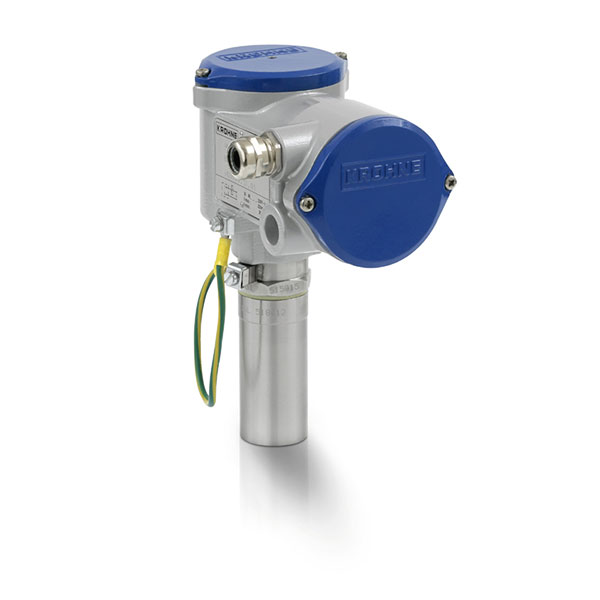The DWM 1000 electromagnetic flow switch and the DWM 2000 electromagnetic flow meter monitor the flow of electrically-conductive liquids, pastes and slurries.
The DWM 1000 uses an induced voltage converted into a switching signal.
The DWM 2000 uses an induced voltage converted into a 4...20 mA current output that is proportional to the flow velocity.
Highlights
- DIP switch for setting full-scale value
- Zero calibration button removes zero drift
- Long version available for pipes larger than 400 mm / 16" in diameter
- Optional ball valve for long version
- Rugged design, IP66 (NEMA 4/4X) protection
- IP 68 version available for immersed applications
- Suitable for process temperatures up to 150°C / 300°F and process pressures up to 25 bar / 360 psig
- Optional digital display for DWM 2000 meters
- Suitable for AC and DC electrical circuits (relays available for the DWM 1000)
- Optional spool pieces for pipe diameters DN25...50 or 1"...2"
- Optional fitting for Tuchenhagen VARIVENT® housings
- Housing is removable or rotatable under process conditions
Industries
- Petrochemical
- Oil & Gas
- Chemical
- Food & beverage
- Water
- Air conditioning (HVAC)
Applications
- Flow detection
- Cooling systems
- Pump protection
Measuring principle
As early as 1832, Faraday tried to determine the speed of the current in the Thames by measuring the voltage induced in flowing water by the earth’s magnetic field. Electromagnetic flow measurement is based on Faraday’s Law of induction. According to this law, a specific voltage is induced in a conductor or conductive medium that moves through a magnetic field. This voltage is proportional to the speed of movement of the medium. On electromagnetic flowmeters, the induced voltage is tapped via two measuring electrodes in conducting contact with the medium. An electronic converter converts the signal into a proportional output signal.

